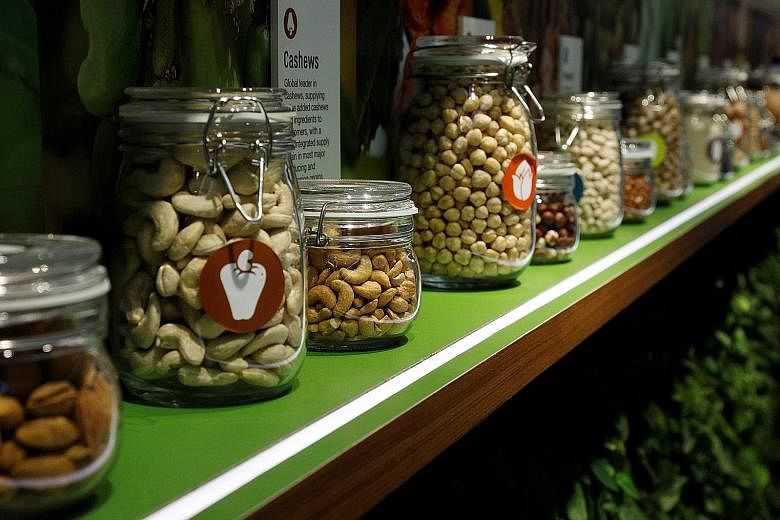Olam International is going big with digitalisation, using sensors in its almond plantations that have helped the company to be about 20 per cent more efficient in using water.
The agri-business is also incorporating sustainability as a core part of its business, co-founder and group chief executive Sunny Verghese said yesterday at the group's fourth-quarter results briefing.
He said on the sidelines of the briefing: "Water is extremely precious in California and Australia where we grow these almonds, and very expensive. If we can improve water-use efficiencies, we can lower the cost of production and improve yields as well. It could be a game changer for us."
Olam has three million almond trees in its California and New South Wales plantations. For every few trees, an attached sensor detects moisture-stress movements that trigger the drip irrigation systems to release the exact amount of water needed. As a result, water-use efficiencies have improved by 22 per cent or 23 per cent, said Mr Verghese.
He also said Olam has piloted initiatives in Indonesia for digital procurement of cocoa and coffee as part of its efforts to digitalise operations.
Olam yesterday reported a net profit of $265.1 million for the fourth quarter, more than double the figure in the same period a year ago. This was due to one-off gains from divestments of the sugar refining business in Indonesia and edible nuts farmland assets in the US, lower depreciation and amortisation, and net finance charges.
For the three months ended Dec 31 last year, earnings per share (EPS) rose to 8.2 cents from 3.2 cents a year ago. Net profit for fiscal year 2017 was up 65.3 per cent to $580.7 million from the year before. EPS stood at 18.6 cents, up from 11.5 cents in FY2016.
-
AT A GLANCE
-
REVENUE: $26.27 billion (+27.6%)
-
NET PROFIT: $580.7 million (+65.3%)
-
TOTAL DIVIDENDS PER SHARE: 7.5 cents (+25%)
Fourth-quarter revenue grew 18.5 per cent to $7.2 billion from the same period a year ago. For FY2017, revenue was up 27.6 per cent to $26.3 billion from the year before. The boost came from better sales in the food staples and packaged food segment, which saw a 59.8 per cent rise to $9.8 billion last year, mainly on higher trading volumes in grains, edible oils, rice and dairy products.
Olam is recommending a final dividend of four cents per share for the fourth quarter, up from three cents the year before. This brings the total dividends per share last year to 7.5 cents, up from six cents the previous year. This is the highest since Olam was listed on the Singapore Exchange mainboard in 2005. The last time it made a dividend payout of 7.5 cents per share was in FY2014.
Mr Verghese said that, moving forward, Olam "may not be immune to near-term uncertainties for some agri-commodities, but will continue to generate long-term, sustainable value for our stakeholders".
Olam closed one cent lower at $2.27 yesterday.

